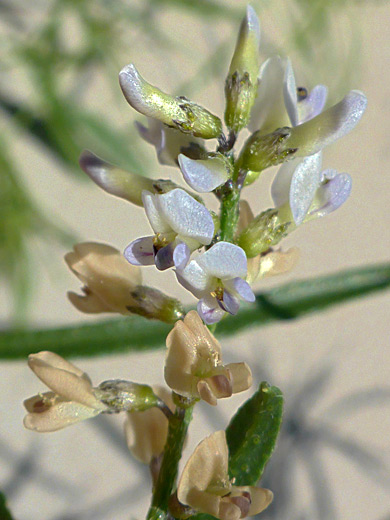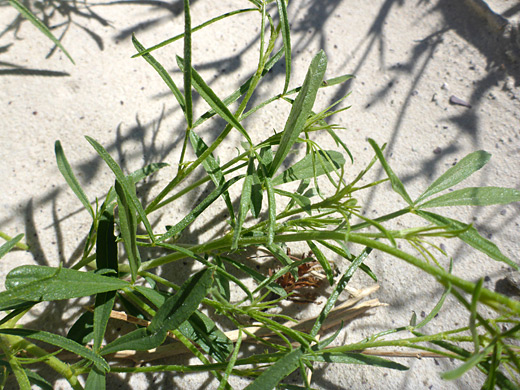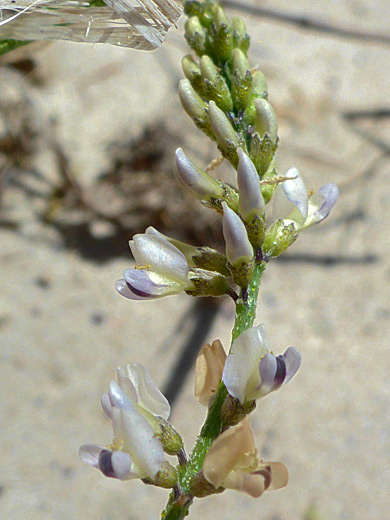Common names:
Lance-leaved scurf-pea, lemon scurfpea
Family:
Scientific name:
Ladeania lanceolata
Synonym:
Psoralidium lanceolatum
Main flower color:
Range:
All of the western states; least common in California and Texas
Height:
Up to 30 inches
Habitat:
Open, dry locations, sandy or gravelly, from near sea level to 8,000 feet
Leaves:
Alternate, palmate, with 3 or 5 linear to narrowly oblanceolate leaflets up 10 1.3 inches long. On short stalks, up to 0.8 inches
Season:
May to July
Leaves of ladeania lanceolata grow along the stem, not at the base, at well-separated, alternate intervals. Stems are erect, dark green, sometimes yellowish towards the base, and are dotted with yellowish oil glands. Leaves are stems may be glabrous, or sparsely covered with strigose hairs.
Flowers are arranged in an elongated, unbranched cluster, one, two or three per node, subtended by a small bract, soon withering. Flowers are attached by very short stalks, and they have an urn-shaped calyx with five tiny lobes at the tip. Corollas are white to pale purple or bluish, becoming orange-brown as they wither. Fruits are rounded, glandular capsules, around 0.2 inches in diameter.
Flowers are arranged in an elongated, unbranched cluster, one, two or three per node, subtended by a small bract, soon withering. Flowers are attached by very short stalks, and they have an urn-shaped calyx with five tiny lobes at the tip. Corollas are white to pale purple or bluish, becoming orange-brown as they wither. Fruits are rounded, glandular capsules, around 0.2 inches in diameter.
All Contents © Copyright The American Southwest | Comments and Questions | Contribute | Site Map





